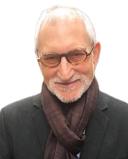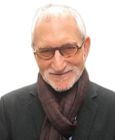Coronavirus Disease 2019
How a Culture of Speed Slows Down
How the coronavirus pandemic has halted the culture of speed.
Posted April 15, 2020 Reviewed by Gary Drevitch
There is much talk in the news about the drug chloroquine phosphate. Many commentators, pundits, and public officials, including the president of the United States, think that this drug, which has been used to treat malaria and auto-immune disorders like lupus, is a miracle cure for the COVID-19 coronavirus. They see chloroquine as a quick fix to the medical, economic, and social dislocations of the pandemic. No one seems to know for sure if the application of chloroquine will speed recovery or prevent deaths from COVID-19. In some cases, the use of chloroquine may well be dangerous.
I know from personal experience that chloroquine is a nasty drug. When I first went to West Africa many years ago, I took Aralen (chloroquine) to prevent malarial attacks. In the Republic of Niger, the Peace Corps physician told us to take two tablets once a week. He suggested we take Aralen on Sundays, when we didn't have to work, because it might take a day or two to get over its serious side effects—nausea, cramps, blurred vision, debilitating headaches.
“Taking the drug,” he told us, “may be unpleasant but it’s much better than getting malaria.”
Like most of my fellow Peace Corps volunteers, I took two tablets every Sunday for two years, during which time I suffered a day or two of nausea, intestinal cramps, headaches, and dizziness. I continued to take Aralen during my early anthropological fieldwork in Niger.

Despite these unpleasant precautions, I suffered two malaria attacks–high fevers, uncontrollable chills, and intense liver pain. Those episodes required an intense course of Aralen to kill the malarial parasites circulating in my blood. Those mega doses made me seriously ill during seven days of treatment.
Chloroquine medicines remain in circulation and still produce severe side effects. In Sweden, physicians recently administered the drug to COVID-19 sufferers, but discontinued the treatments because patients suffered devastating side effects. In the April 08 edition of Daily Mail Conor Boyd wrote:
Hospitals in Sweden have stopped using the malaria drug chloroquine on coronavirus patients after reports it was causing blinding headaches and vision loss.
Doctors in the Vastra Gotaland region, 200 miles west of Stockholm, are no longer administering the medication, touted as a 'miracle drug' by Donald Trump.
A number of patients at hospitals in the county reported suffering cramps, peripheral vision loss, and migraines within days of being prescribed the tablets.
For one in 100 people, chloroquine can also cause the heart to beat too fast or slow, which can lead to a fatal heart attack.
Despite this negative information, a dearth of clinical data, and the considered caution of medical professionals, the pundits and politicians continue to champion the miracle effectiveness of chloroquine.
Such persistence underscores a much larger cultural issue: the derogation of science in the culture of speed. In what Norwegian anthropologist Thomas Hylland Eriksen (2016) has called our overheated world, we live in a culture of speed, a time of ceaselessly accelerated change. In the culture of speed, there is little time or patience for the slow, inconvenient methods of science. It takes too long to determine if chloroquine is a safe or effective drug for coronavirus treatment. It takes too long to continue the slow progress of widespread social distancing that has begun to flatten the pandemic curve.
But what are the costs of life in the “overheated” fast lane? It is clear that in the culture of speed, unlimited and unregulated economic expansion has polluted air and water, provoked climate change, and rendered extinct an increasing number of animals and plants. These cultural attitudes and their ecological ramifications have become “par for the course."
Enter the coronavirus. Beyond all expectation, the pandemic has quickly brought the culture to a screeching halt. In one month global lockdowns have reduced travel, for work or pleasure, to a trickle. Non-essential businesses are closed. Shelter-in-place orders have transformed middle-class routines: no hectic steeplechase days filled with non-essential events, no frantic three-city-in-two-days business trips. Indeed, for most of us, the pandemic has significantly slowed the pace of social life. In our shelter-in-place world, many of us experience slow-paced mornings laced with conversation. There is time to take long walks on empty streets or in the local parks. During the walks that I take twice a day, I’ve noticed that the usually poor air that hovers over Wilmington, Delaware, where I live, has dramatically improved.
There are reports that the smog that typically shrouds Madrid, Venice, and Beijing has dissipated. In India, according to Rashaan Ayesh’s reporting in Axios, there are now clear blue-skied visions of the distant snapped-capped Himalayas. In a CNN report, Drew Kann wrote about the ecological changes the pandemic has brought to Los Angeles:
The mental image many people have of the Los Angeles skyline is one obscured by smog, with thick air pollution hanging over its downtown buildings.
But with the city — and the entire state of California — under stay-at-home orders to stem the deadly outbreak of coronavirus, something dramatic has happened to the air in LA.
On Tuesday, LA saw some of the cleanest air of any major city in the world, according to IQAir, a Swiss air quality technology company which also monitors pollution levels in cities around the globe. [April 07, 2020]

Although the coronavirus pandemic has brought widespread and profound physical, emotional, and social distress, it has also transformed our speedy social, economic, and cultural lives. No one knows when stay-at-home restrictions will be lifted. Perhaps economies will “open up” later this spring. Given the absence of a vaccine, will "opening up" bring a resurgence of infection and death? How long will we have to practice social distancing? In the fall will schools, colleges, and universities be able to reestablish face-to-face instruction?
In the shadow of the pandemic, we are caught between our immediate past and our near future. Speeding toward miracle cures and economic quick fixes, as if nothing has happened and everything will quickly return to “normal," is likely to have devastating personal, social, and economic consequences. I, for one, can provide no quick-fix culture of speed solutions to our current social and economic crisis. Sadly, all of us can expect to suffer for some time to come.
Are we stuck in an indeterminate period of slowness? How can we adjust to it?
In this slow moment, we are all on a metaphorical bridge, what the Sufis call barzakh. That bridge links our past and our future. On that bridge, we are neither here nor there, but between, a state that requires not miracle cures or expedient shortcuts but slow, methodical, and imaginative thinking, thinking that shows us a way forward to a new way of understanding our lives in a new world.
References
Eriksen, Thomas Hylland 2016. Overheating: An Anthropology of Accelerated Change. London: Pluto Press
Erirksen, Thomas Hylland 2020. After Covid Can We Do Things Differently? Full Circle Brussels (Digital Salon), April 10, 2020




